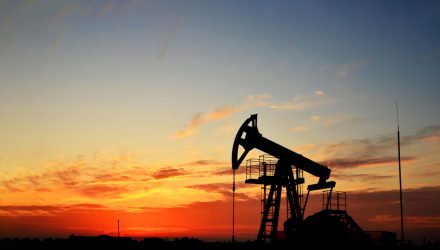Summary
- NGLs have multiple end-uses, which impact our economy and everyday lives. A constructive outlook for global NGL demand is driven by the needs of a growing population.
- NGL prices at Mont Belvieu have rallied strongly in 2022, extending their upward momentum from the depths of the pandemic.
- Several midstream companies have announced growth projects to capitalize on the strong outlook for NGLs, including new fractionation facilities and export capacity.
While natural gas liquids (NGLs) are not as familiar as oil and natural gas, NGLs are essential petrochemical building blocks and fuels with a constructive demand outlook driven by a growing global population. Today’s note provides a brief overview of NGLs and their recent price improvement, the fundamental drivers of rising global demand, and how midstream companies are capitalizing on these trends to grow cash flows.
Natural Gas Liquids 101
To begin, it may be helpful to review the basics of NGLs, which are critical to our everyday lives but admittedly not well known. NGLs are hydrocarbons that are extracted alongside oil and natural gas at the wellhead. The raw natural gas stream is then transported through gathering pipelines to processing facilities, which separate natural gas and NGLs. Mixed NGLs (referred to as Y-grade) are then transported to fractionation facilities, many of which are located in Mont Belvieu, Texas, where NGLs are separated into purity products – ethane, propane, butane, isobutane, and natural gasoline. Mixed NGLs typically contain ~45% ethane and ~25% propane. As illustrated below, NGLs have multiple end-uses, which impact our economy and everyday lives. Ethane is mainly used as a petrochemical feedstock to produce ethylene, which is used to make plastics, while propane is mainly used as a fuel for heating/cooking and as a petrochemical feedstock. Butane and isobutane are typically blended into transportation fuels.

NGL prices at Mont Belvieu have climbed with oil and natural gas.
The global economic recovery has seen NGL prices rise alongside crude prices since the depths of the pandemic, and recent gains have coincided with stronger oil prices since Russia’s invasion of Ukraine.
For context, Russia’s production of propane and butane (referred to as Liquefied Petroleum Gas or LPG) totaled 0.5 million barrels per day (MMBpd) in 2019, with approximately one-third of production exported. Year to date, the NGL basket price (1) has rallied almost 30% as robust domestic demand and rising exports have driven strong price gains for ethane (+64.9% YTD) and propane (+22.9% YTD), which account for ~70% of a typical NGL barrel. NGL prices as a percentage of WTI prices have hovered around 50%, which is elevated relative to the 30%-40% range seen pre-pandemic, reflecting the tightening supply-demand balance.

Petrochemicals drive a strong outlook for NGLs.
In conjunction with the growth in US oil and natural gas production, NGL production has risen steeply over the last decade, making the US the largest NGL producer and exporter in the world. Global demand for NGLs has increased as a growing population has required more plastics and as developing countries have shifted towards using propane and butane for cooking as a replacement to dirtier biomass. Petrochemical demand was resilient through the pandemic and is expected to continue outpacing the demand growth for oil. To help frame the growth prospects for NGLs in a simple manner, consider the plastics in your household and extrapolate those items to a growing middle class around the world.
Relative to other countries, US petrochemical producers benefit from a feedstock cost advantage driven by the proliferation of NGLs and cheaper energy costs given the lower price of natural gas in the US compared to other parts of the world. This has driven significant investment in US ethylene production capacity (called crackers) over the years. In 2021, domestic ethane consumption grew by an estimated 50,000 barrels per day (Bpd) according to the US Energy Information Administration (EIA). From 2021 to 2023, the EIA estimates US ethane consumption will grow by 340,000 Bpd to outpace the consumption growth of all other US petroleum products.
NGL fundamentals support growth opportunities for midstream.
Growing NGL production and strong demand both domestically and abroad provides opportunities for midstream to grow their fee-based businesses, particularly around fractionation and export capacity. The EIA forecasts US NGL production will grow by 0.5 MMBpd in 2022 and another 0.3 MMBpd in 2023, averaging 6.3 MMBpd in total next year. This will require additional fractionation capacity. In November, ONEOK (OKE) announced it was resuming construction of its MB-5 fractionator in Mont Belvieu, which will boost OKE’s total fractionation capacity to more than 1 MMBpd upon expected completion in 3Q23. During its Analyst Day earlier this month, Enterprise Products Partners (EPD) announced plans to build a new fractionator in Mont Belvieu, adding approximately 150,000 b/d of fractionation capacity in 3Q23. EPD also announced plans to build a second ethane export terminal on the Gulf Coast and to approximately double the capacity of its Morgan’s Point ethylene export terminal in stages – both expected to reach completion in 2025. Energy Transfer (ET) completed expansion projects in 2021 that brought its total NGL export capacity to more than 1.1 MMBpd, which it estimates is the largest in the world. After exporting 26 million barrels (MMBbls) of ethane in 2021, ET expects ethane exports to total 40 MMBbls in 2022 and 60 MMBbls in 2023 as discussed on the company’s 4Q21 conference call. Clearly, NGLs represent an attractive growth area for midstream.
Bottom Line:
The constructive outlook for NGL demand and growing production in the US creates opportunities for midstream companies with NGL-focused assets, allowing them to grow their fee-based businesses.
(1) Composite calculated using NGL prices from Bloomberg and weighting from the OPIS Mont Belvieu NGL Basket. The weightings are 42% ethane, 28% propane, 11% normal butane, 6% isobutane, and 13% natural gasoline.
For more news, information, and strategy, visit the Energy Infrastructure Channel.

